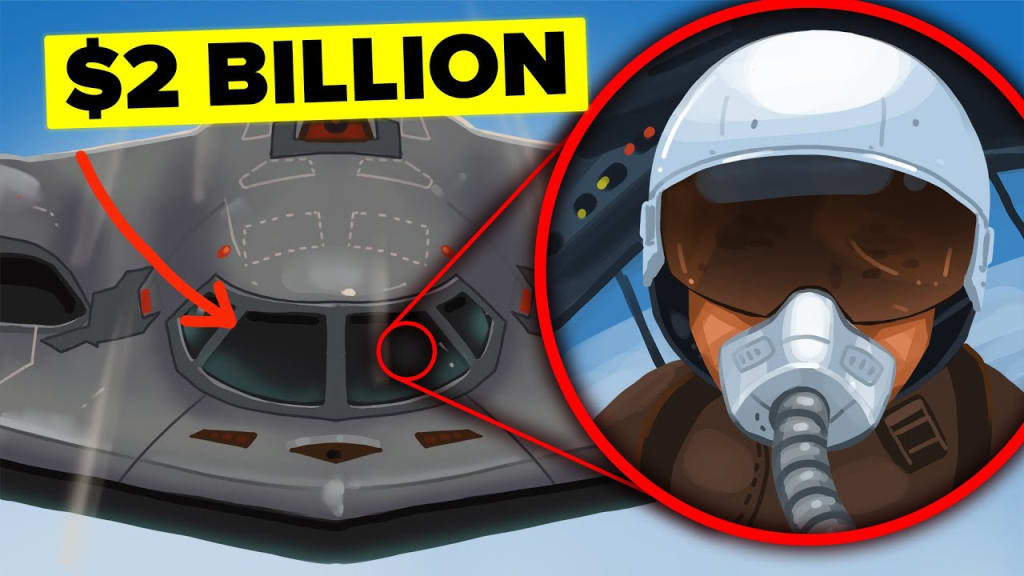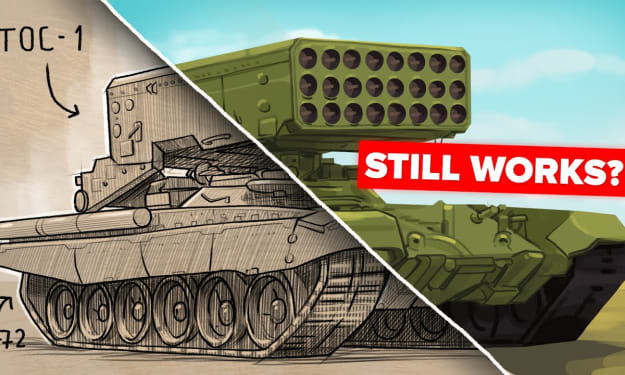How is a day in the life of a $2 billion US stealth bomber pilot spent?
You've been chosen for one of the most prestigious jobs in the Air Force. You are flying your maiden mission in a B-2 Stealth Bomber today. Years of preparation have gotten you to this point. It will culminate with you being crammed into a tight cockpit, given medicines to keep you awake, and given a flight plan for the next 24 hours. As you buckle on, you wonder if this $2 billion airplane, outfitted with some of the most lethal armaments ever created, is really worth it. You're having second thoughts after witnessing the tight cockpit you'll be spending the next full day in. ♟😎🤑♟

You've been chosen for one of the most prestigious jobs in the Air Force. You are flying your maiden mission in a B-2 Stealth Bomber today. Years of preparation have gotten you to this point. It will culminate with you being crammed into a tight cockpit, given medicines to keep you awake, and given a flight plan for the next 24 hours. As you buckle on, you wonder if this $2 billion airplane, outfitted with some of the most lethal armaments ever created, is really worth it. You're having second thoughts after witnessing the tight cockpit you'll be spending the next full day in. ♟😎🤑♟
One of the most prestigious assignments in the Air Force has chosen you for it. You fly your first mission in a B-2 Stealth Bomber today. You've been preparing for this moment for years. Your ordeal will come to a head when you are crammed into a small cockpit, given sleep aids, and given a flight plan for the following 24 hours. As you fasten your seatbelt, you begin to doubt whether the $2 billion aircraft, which is outfitted with some of the most potent weapons ever created, is really worth it. You are beginning to second-guess your decision after seeing the claustrophobic cockpit where you will spend the remainder of the next day. Remembering your time in flight school, you recall studying the background of this magnificent beast. The B-2 was the US Air Force's crowning achievement.
It was initially created during the Cold War to avoid Soviet radar. Its wingspan is 172 feet, its maximum speed is 560 mph, and its range is just short of 7,000 miles. Not to mention that it is capable of carrying anything from nuclear bombs that can completely destroy an enemy military complex to smart bombs that can hit a specific target. The Berlin Wall had already fallen and the Soviet Union was disintegrating by the time the first B-2 rolled off the assembly line, so it was never able to demonstrate its capabilities during the Cold War. But even today, this magnificent aircraft is still in operation. You can't help but look at the other planes in the hangar whenever you're standing on the runway at Whiteman Air Force Base.
There are a total of 20 B-2 Spirits, each of which is painted black and has the distinct shape of a flying wing. The B-2s in the hangar were produced at a cost of $2 billion. You chuckle at the astronomical price tag placed on these airplanes. In addition to the enormous costs involved in building them, these aircraft also require ongoing maintenance and armament. The B-2s are actually worth much more than their initial 2 billion dollar price tag. However, these planes are valuable in light of what they are capable of. You worked hard and underwent years of training to get where you are today, though; you didn't just land this job because of your attractiveness. From the Air Force Special Operations Command, you were chosen for the position.
If you're being completely honest with yourself, you've always wanted to be an astronaut, and you assumed that by rising through the Air Force ranks, NASA recruiters would approach you and beg you to operate their rockets. Yet the U. Different things were in store for you in the S. military's plans. You were eventually located by a senior Air Force Global Strike Command officer. When the battle simulation abruptly ended, you were in the middle of it and on your way to passing with flying colors. As you waited for orders to be given over the speakers, the room was pitch-black. A sliver of light entered as the door opened. A deep voice emanating from the light instructed the user to exit the simulator. You unbuckled your seatbelt.
Unless there was some major news, you reasoned, there was no reason to halt the simulator. Maybe you were about to get new orders to start the astronaut training. The person waiting for you when you emerged from the simulator, however, wasn't a NASA director but a senior Air Force general decked out in Medals of Honor. He gave you a hard look. You later learned that what initially appeared to be him assessing you was actually him. In order to fit in the cockpit, a B-2 pilot must be 5 feet 8 inches or shorter. Your skills would be put to the ultimate test at Whiteman Air Force Base, where the general gave you transfer papers. Giant B-2 aircraft manuals were provided to you for months to read.
You demonstrated your mastery of every mechanism and switch in the B-2's cockpit by passing exam after exam. Your training officer drilled you on scenarios you might come across in the field while you were inside a simulator that perfectly replicated the B-2 in every way, like you would when flying long-distance missions, you spent hours in the simulator. You finally got to sit behind the actual flight stick after acing all of the simulations and tests with flying colors. The cockpit appeared exactly as it had in the simulations. However, as the B-2 accelerated to speeds of hundreds of miles per hour when the engines were engaged, you were compelled to recline in your seat.
The sensation of taking off for the first time will always be etched in your memory. Being fastened to a smooth, powerful rocket was how it felt. You believed you had attained true freedom when you touched down after your first flight. The B-2 followed your every move as if it could foresee what you wanted from it. You couldn't wait to take off again each time you parked the plane in the hangar. You were constantly prepared for unforeseen drills over the course of the following few months. The B-2 stealth bomber teams and the actual aircraft are always prepared for combat, according to the Whiteman officers. Long-distance flight missions were carried out by you and your crewmate as training exercises.
When you were stuck in the B-2 for more than 24 hours, you learned how to balance the various tasks while traveling across the world. There was peace in the world when you were first recruited, but things have since changed. The decision to invade a neighboring nation has been made by a ruthless dictator on the other side of the world. His ruthless attacks and the murder of numerous innocent civilians have compelled the U. S. government to take action. Early this morning, you got the call. Your instructions stated that you needed to show up at the Whiteman Air Force Base immediately. You drive to the base after gathering your emergency mission kit. The security personnel wave you through as your car approaches. Time cannot be wasted.
You need to launch your $2 billion stealth bomber as soon as you can because your mission will be lengthy. Your car is parked, and you quickly exit. You are welcomed by a senior official as you approach the hanger. He extends his hand, and you salute him before taking the manilla folder containing your flight instructions. You read the report as he describes the importance of your mission. Several satellite images show nuclear missiles being deployed to the front lines of the conflict area. Your mission is to fly your bomber covertly to the launch pads and neutralize the nuclear weapons before they are ever launched. You and your co-pilot must make sure the enemy never learns about your aircraft because, technically, the United States is not at war.
You will destroy the nukes with the help of smart bombs, making sure to leave no traces behind that you were involved. After closing it, you give the general the folder once more. You respond, "I understand, sir," indicating that this mission is not officially sanctioned. You enter a different door to reach the main hangar, where your B-2 stealth bomber is waiting. Your co-pilot and a doctor are already standing next to the black airplane. You nod to the doctor while shaking your co-pilot's hand. Her small cup of pills is handed to you. She explains that it will help with the lengthy flight. The medication is intended to help you maintain your alertness during key phases of the mission.
You've adjusted you’re eating and sleeping schedule since being chosen to be a B-2 pilot. Your body has established a routine that enables you to keep proper sugar levels at any time of the day by spreading out your food intake throughout the day as opposed to eating three large meals. When traveling for a long time by air, this is beneficial. With the help of power naps during the day and a modified sleeping schedule, you are able to get by on just a few hours of sleep each night. Your circadian rhythm has been altered by these practices, enabling you to change your sleep schedule at any time. As you approach the steps leading up to the cockpit, you return the empty cup to the doctor.
When you get to the top, you take a look inside before settling in. As your co-pilot comes in from the opposite side, you start the preflight inspection. Your aircraft is outfitted with cutting-edge smart bombs that enable precise targeting while you go through the system checks. You're prepared to take off after everything checks out. The engineers who are helping you get the B-2 ready for takeoff descend and remove the metal steps from the aircraft. The cockpit closes with a hiss, enclosing you and your co-pilot inside the stealth bomber. The heads-up display appears on the screen in front of you as you listen to the last set of instructions from flight command.
The B-2 has windows, but they are covered by screens that display real-time images from an advanced camera system installed all around the aircraft. Three-dimensional images are produced from data collected by various sensors and aid in guiding the aircraft. Assuring that the plane is prepared for takeoff, your co-pilot performs one last readout. Making sure to only apply the tiniest amount of thrust, you start removing the B-2 from the hangar. A commander enters the comms as you taxi to the runway and reviews the final flight plan once more. An in-flight refueling maneuver just before entering hostile airspace will cut the journey's duration in half to about 30 hours. At the end of the runway, you stop the B-2 after confirming the orders.






Comments
There are no comments for this story
Be the first to respond and start the conversation.